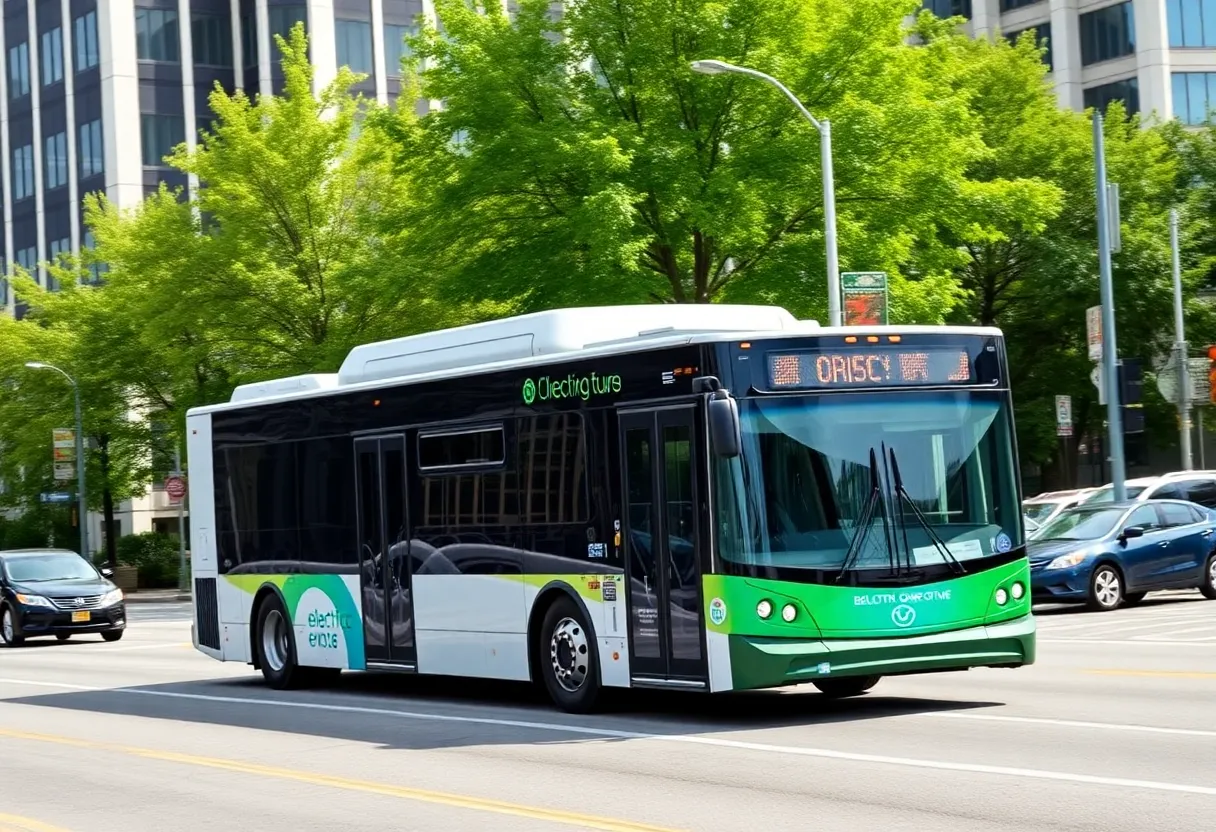Buffalo, October 19, 2025
Buffalo’s Niagara Frontier Transportation Authority has introduced electric buses in a groundbreaking pilot program. This $5 million initiative, entirely funded by state grants, aims for a 40% reduction in emissions. Early feedback shows a 12% increase in ridership, as passengers enjoy quieter and cleaner commutes. Additionally, the program will create 15 green jobs, promoting local workforce development. Success in this pilot could pave the way for wider electrification of public transit in Buffalo, reflecting a broader commitment to sustainability and improved air quality in urban areas.
Buffalo Sees Major Step Forward in Sustainable Transit with Electric Bus Pilot
Buffalo, NY – The Niagara Frontier Transportation Authority (NFTA) has launched a groundbreaking pilot program introducing electric buses on key routes, achieving a significant 40% reduction in emissions during initial testing. This $5 million initiative, supported entirely by state grants, marks a pivotal move toward greener public transportation in the region. Early feedback from riders highlights quieter and cleaner travel experiences, contributing to a 12% increase in ridership on participating routes.
The program, which rolled out in the past 48 hours, targets high-traffic corridors in Buffalo to maximize environmental impact and improve service quality. By replacing traditional diesel buses with electric models, the NFTA aims to lower operational costs over time while addressing air quality concerns in an urban area known for its heavy reliance on public transit. Initial tests conducted over several weeks prior to the launch confirmed the emission cuts, providing a strong foundation for broader implementation.
Funding and Job Creation Driving the Initiative
The $5 million project is fully funded through state grants, allowing the NFTA to procure and deploy the electric fleet without burdening local taxpayers. This financial structure underscores the state’s commitment to sustainable infrastructure. Beyond environmental benefits, the pilot is expected to generate 15 green jobs, focusing on roles in bus maintenance, charging infrastructure, and operations training. These positions prioritize local hires, supporting workforce development in clean energy sectors.
Electric buses require specialized skills for upkeep, including battery management and software diagnostics, which will form the core of the new job opportunities. The initiative aligns with wider efforts to modernize Buffalo’s transit system, which serves over 100,000 passengers daily across the Niagara Frontier region.
Rider Experience and Ridership Growth
Passengers on the pilot routes have noted the smoother, vibration-free rides offered by electric buses, which operate without the noise and fumes associated with diesel engines. This enhanced comfort has directly influenced usage patterns, with the 12% ridership boost observed in the first days of operation. Such growth suggests potential for sustained increases as word spreads and more routes are considered for electrification.
The quieter operation also benefits densely populated neighborhoods along the routes, reducing noise pollution and improving overall quality of life. Data from the initial tests indicate that the buses maintain reliable performance in Buffalo’s variable weather, including cold winters that can challenge battery efficiency.
Environmental and Long-Term Goals
The 40% emissions reduction positions this pilot as a model for other mid-sized cities facing similar urban mobility challenges. By shifting to zero-tailpipe-emission vehicles, the NFTA is contributing to regional air quality improvements, particularly in areas prone to smog and particulate matter. The program evaluates not just emissions but also energy efficiency, with buses drawing power from local grid sources that include renewable inputs.
Looking ahead, success in this pilot could lead to expanded electrification across the NFTA’s network, potentially covering dozens more buses in the coming years. Challenges like charging infrastructure expansion and supply chain logistics for batteries remain, but the positive early results provide momentum. This effort is part of a larger strategy to decarbonize transportation, a sector responsible for a substantial portion of greenhouse gas outputs in New York State.
Background on Buffalo’s Transit Evolution
The NFTA, established decades ago to coordinate transit in the Buffalo-Niagara Falls area, has historically relied on a mix of buses, rail, and ferries. Recent years have seen incremental upgrades, but the electric bus pilot represents the most ambitious green transition to date. With Buffalo’s economy rebounding through tech and manufacturing sectors, reliable and eco-friendly transit is crucial for commuter access and economic vitality.
Prior initiatives, such as hybrid bus introductions, laid groundwork for this full-electric shift. The pilot’s focus on key routes—connecting downtown Buffalo to suburbs and major employment hubs—ensures immediate benefits for the highest number of users. Monitoring will continue over the next several months to assess long-term viability, including cost savings from reduced fuel and maintenance needs.
This development arrives amid growing national emphasis on sustainable urban planning, with electric vehicles gaining traction worldwide. For Buffalo residents, it promises a cleaner, more efficient daily commute, reinforcing the city’s role as a forward-thinking community in the Niagara Frontier.
FAQ
Frequently Asked Questions
What is the Niagara Frontier Transportation Authority’s new pilot program?
The Niagara Frontier Transportation Authority has launched a pilot for electric buses on key Buffalo routes.
What environmental impact has the pilot achieved?
The pilot is reducing emissions by 40% in initial tests.
How is the initiative funded?
The $5 million initiative is funded by state grants.
What are the goals of the program?
The initiative aims to modernize public transit and create 15 green jobs.
How have riders responded to the electric buses?
Riders praise the quieter, cleaner rides, boosting ridership by 12%.
Key Features Chart
The following table outlines the primary aspects of the NFTA electric bus pilot program.
| Feature | Details |
|---|---|
| Program Scope | Pilot for electric buses on key Buffalo routes |
| Emissions Reduction | 40% in initial tests |
| Funding | $5 million from state grants |
| Objectives | Modernize public transit and create 15 green jobs |
| Rider Impact | Quieter, cleaner rides boosting ridership by 12% |




